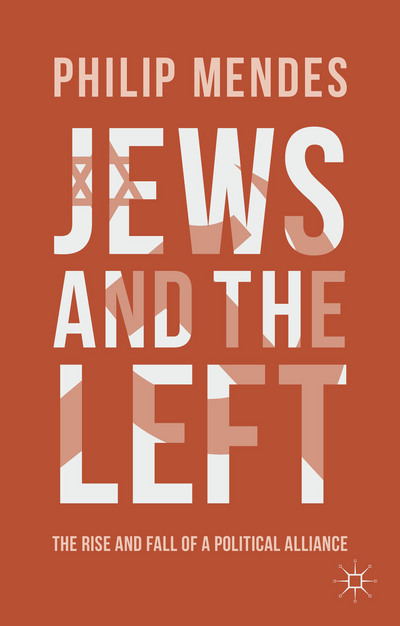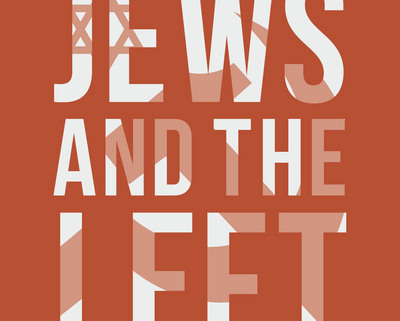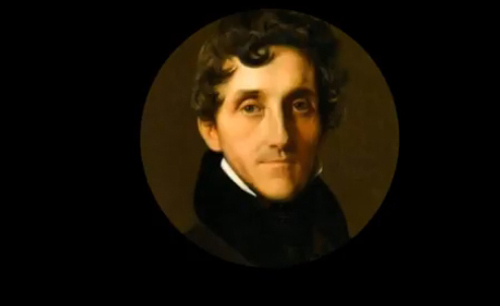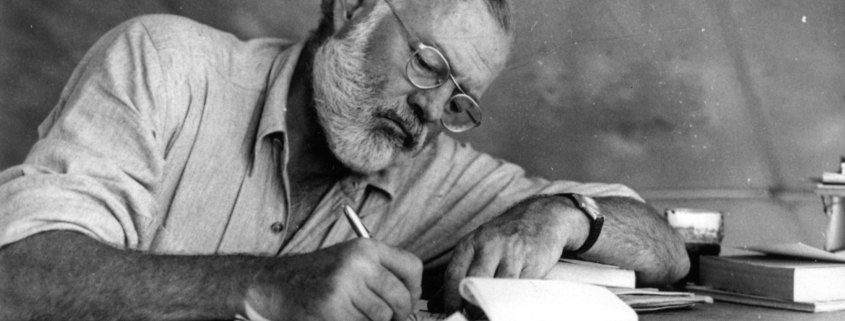Jews and the Left by Philip Mendes: Review — Part 1
/2 Comments/in Featured Articles, Jews and the Left/by Brenton Sanderson
Jews and the Left: The Rise and Fall of a Political Alliance
Philip Mendes
Melbourne, Victoria: Palgrave MacMillian, 2014
Introduction
In 2018 I reviewed Alain Brossat and Sylvie Klingberg’s Revolutionary Yiddishland: A History of Jewish Radicalism, a shameless apologia for (and indeed glorification of) Jewish involvement in radical political movements in the early- to mid-twentieth century. Jews and the Left: The Rise and Fall of a Political Alliance by the Jewish Australian academic Philip Mendes covers much of the same ground, rehashing many of the same apologetic tropes.
Mendes, an Associate Professor at Monash University in Melbourne, describes his book, published in 2014, as “the first publication to provide a systematic historical and political overview of the relationship between Jews and the left.”[1] Largely ignoring scholarly literature on the subject emanating from non-Jewish and non-philo-Semitic sources, Mendes insists that “With the exception of Arthur Liebman’s outstanding 1979 text, Jews and the Left, there has been little systematic analysis of the Jewish—Left relationship.”[2] Such an ideologically-selective survey of the literature leads him to conclude that “the phenomenon of Jewish radicalism seems to have been seriously under-researched by both general students of sociology and history, and Jewish studies specialists.”[3]
Unlike some of the more egregious Jewish propagandists and apologists who have contributed to the topic, Mendes makes no attempt to deny disproportionate Jewish involvement in political radicalism, stating:
The disproportionate historical contribution of Jews to the political Left has been well documented. Both as individual theorists and activists of the stature of Marx, Trotsky, Rosa Luxemburg, Léon Blum and Emma Goldman, and as organized mass labor movements in, for example, revolutionary Russia and early—mid 20th century Warsaw, Amsterdam, Paris, Toronto, Buenos Aires, New York and London, Jews have been conspicuous for their socialist and communist affiliations.[4]
Indeed, Mendes points out that from around 1830 until 1970, an “informal political alliance existed between Jews and the political Left.”[5] Read more
Pariah to Messiah: The Engineered Apotheosis of Baruch Spinoza, Part 1 of 3
/7 Comments/in Featured Articles, Jewish Ethnic Networking/by Andrew Joyce, Ph.D.Editor’s note: This is a classic article by Andrew Joyce published originally in March, 2013 on how Jewish academic activists created the image of Spinoza as a great philosopher and father of the Enlightenment. I interviewed Andrew Joyce on TOQLive on May 6, 2019. Great discussion!
A recurring theme here at TOO has been the monitoring of ethnic networking in efforts to establish Jewish figures in positions of scientific, academic, artistic or cultural pre-eminence. Erudite studies by several writers, particularly Kevin Macdonald (a major theme of The Culture of Critique) and Brenton Sanderson, have shed light on individual cases (e.g., Boas, Freud, Trotsky, Rothko, Mahler) as well as the more generic processes involved in these efforts (e.g., promotion in the elite media and the academic world). Typically these efforts can be said to begin with the veneration by a group of Jews of a Jewish intellectual or artist, and is followed by the creation of an authoritarian cult-like aura around his or her personality. The process reaches its completion, in some cases after the death of the guru figure, in an aggressive Jewish marketing effort to convince society at large that this figure, together with his or her ideas, is or was of national or international—if not cosmic—significance. It is predominantly by this process that the notion of “Jewish Genius” is perpetuated.
Although in some respects the pattern is slightly different in the case examined in this article, where the effort only began centuries after the death of its subject, I argue that the essence and goal of the campaign is consistent with previous cases. I explore what is arguably the most ambitious effort yet attempted to create a Jewish icon for the non-Jewish world. In this, the case of Baruch Spinoza, I will outline the history of the Jewish effort to place him at the very heart of the Enlightenment, and to crown him as nothing less than the founder of the modern West, and even of modern democracy itself.
Although I had been aware for some time of the Jewish emphasis on Spinoza as a prominent and significant Enlightenment figure, I only began to appreciate the scale and complexity of the Jewish effort to canonize him recently when Jonathan Israel’s 2001 Radical Enlightenment: Philosophy and the Making of Modernity, 1650–1750 was brought to my attention. In this extravagantly praised tome and its 2006 sequel Enlightenment Contested: Philosophy, Modernity, and the Emancipation of Man, 1670-1752, Israel rejected strictly national interpretations of the Enlightenment, and argued that it was a single, highly integrated intellectual and cultural movement. At the centre of this single movement he posits the ideas of the 17th-century Jewish philosopher Baruch Spinoza, whom Israel argues we should view above Descartes, Hobbes, Locke, Voltaire, Newton and other non-Jews, as the source of modernity. In Israel’s words: Spinoza and Spinozism were “the intellectual backbone of the European Radical Enlightenment everywhere.”[1]
At least compared with the works of ethnic activists like Anthony Julius, Israel’s work is representative of a more subtle and sophisticated way of shaping ‘ways of seeing.’ Much of what he says is at least factually correct. In some cases his assertions are beyond dispute, and are liberally furnished with references to archival documentation. However, Israel’s basic thesis over-reaches the sum of its parts. While his work is meticulously researched, very detailed, and replete with copious amounts of primary and secondary source material, there remains significant doubt about the basic argument of the book — that the support of over seventy 18th-Enlightenment figures for modern democracy, separation of Church and State, freedom of expression, social justice, equality, fairness, and tolerance can be directly linked only to the ideas of Baruch Spinoza.
The aim of this essay is not to explore the Enlightenment, nor even to directly challenge Israel’s theory of there being one single ‘Radical Enlightenment’. Instead, this essay simply and modestly aims to demonstrate that the effort to place Spinoza at the center of the Enlightenment is much older than the work of Jonathan Israel, and that it has been, and remains, a specifically Jewish effort. On a deeper level, I explore its mechanisms and the motivations underlying it. Read more
On Hemingway, Jews, and Masculinity
/21 Comments/in Featured Articles, The Arts and Culture/by Andrew Joyce, Ph.D.
 “Why not make the Jew a bounder in literature as well as in life? Do Jews always have to be so splendid in writing?”
“Why not make the Jew a bounder in literature as well as in life? Do Jews always have to be so splendid in writing?”
Ernest Hemingway to Max Perkins, Dec. 21, 1926.
Having previously written about the early twentieth-century writers T. S. Eliot, Ezra Pound, and Robinson Jeffers, I felt it was high time that I addressed the work and thought of an altogether more controversial and ambiguous literary figure of the same period — the inimitable Ernest Hemingway. Hemingway may seem an odd choice to profile for a White advocacy site and, moreover, in his last and only appearance at The Occidental Observer, now some three years ago, he proved very controversial and divisive indeed. He was a supporter of the International Brigades during the Spanish Civil War, and, in For Whom the Bell Tolls, the novel based on his experiences in Spain, one senses that Hemingway is ventriloquizing when one of his characters responds to the question “Are you a Communist?” with the reply “No, I am an anti-fascist.” Most sensationally however, at least one 2017 text written by a former CIA officer has made the claim that Hemingway was recruited as a Soviet agent in 1940 by two of the top NKVD agents then operational in the United States — the Jew Jacob Golos and the Soviet Jewish spy king Abram Osipovich Einhorn. Both men had in turn provided leadership and support to the notorious spying cell run by Julius Rosenberg. Returning to the title of the last TOO article on the man, we have to once more ask who is the “real” Ernest Hemingway? Was he, as one critic responded to the last piece, “not a great White man”? Or is he, as Robert S. Griffin insists, “an exemplary white historical figure”?
The ambiguity, and even hostility, surrounding Hemingway is not without reason. Even setting aside the “enemy agent” accusations, Hemingway was, in several respects, intellectually of what might be termed ‘the Old Left,’ in the sense that he tended towards support for economic socialism, pursued ideological comradeship with blue collar workers and veterans, and had many friends with similar political tastes. His alcoholism, confrontational character, philandering, and final descent into mental illness and suicide could lead some to perceive the author as little more than a debauched degenerate. This behavior was in all likelihood rooted in genetic causes — and almost certainly reverberated flamboyantly in his son Gregory, an alcoholic transvestite who occasionally called himself Gloria, had surgery to create one “breast,” and finally died in the Miami-Dade Women’s Detention Center a day after being arrested for indecent exposure.
In other respects, however, before his final decline, Hemingway was perhaps the quintessential, unreformed White rogue, a kind of throwback to the ancient, uncivilised Indo-European who defies strictly moralistic explanations. He was a rank individualist, antagonistic to all forms of authority and authoritarian government, Stalin’s included. Of course, his third wife, Martha Gellhorn, was Jewish, and yet he publicly explained his decision not to have children with her as being due to his aversion to having children with Jewish genes.1 He embraced the lifestyle of the masculine bon vivant, had a strong distaste for what he called “queers” “fairies” and “faggots,” enjoyed his experience observing colonialism in Africa, and loved nature and outdoor pursuits. On a more personal level, he wrote one of my favourite short novels, The Old Man and the Sea, a literary masterpiece on the themes of masculine endurance and stoicism, and influenced two of my favourite twentieth-century modernist writers, William Faulkner and Cormac McCarthy. Hemingway remains, if nothing else, as enigmatic as ever. As we are now just couple of years away from the 60th anniversary of his death, is there anything in Hemingway’s life and work that retains value for the White man of today? Read more
Awakening Conference: 00:40; Frodi Midjord: 41:25; Pyhä Kuolema 2:02:34; Kevin MacDonald: 2:38:55
/in Video Archive/by Kevin MacDonaldJames Edwards at the Counter-Currents Conference, Atlanta, 2022
Watch TOO Video Picks
DONATE
Follow us on Facebook
Keep Up To Date By Email
Subscribe to get our latest posts in your inbox twice a week.
Topics
Authors
Monthly Archives
RECENT TRANSLATIONS
Blogroll
- A2Z Publications
- American Freedom Party
- American Mercury
- American Renaissance
- Arktos Publishing
- Candour Magazine
- Center for Immigration Studies
- Chronicles
- Council of European Canadians
- Counter-Currents
- Curiales—Dutch nationalist-conservative website
- Denmark's Freedom Council
- Diversity Chronicle
- Folktrove: Digital Library of the Third Way
- Human Biodiversity Bibliography
- Instauration Online
- Institute for Historical Review
- Mondoweiss
- National Justice Party
- Occidental Dissent
- Pat Buchanan
- Paul Craig Roberts
- PRIVACY POLICY
- Project Nova Europea
- Radix Journal
- RAMZPAUL
- Red Ice
- Richard Lynn
- Rivers of Blood
- Sobran's
- The European Union Times
- The Occidental Quarterly Online
- The Political Cesspool
- The Right Stuff
- The Unz Review
- Third Position Directory
- VDare
- Washington Summit Publishers
- William McKinley Institute
- XYZ: Australian Nationalist Site









